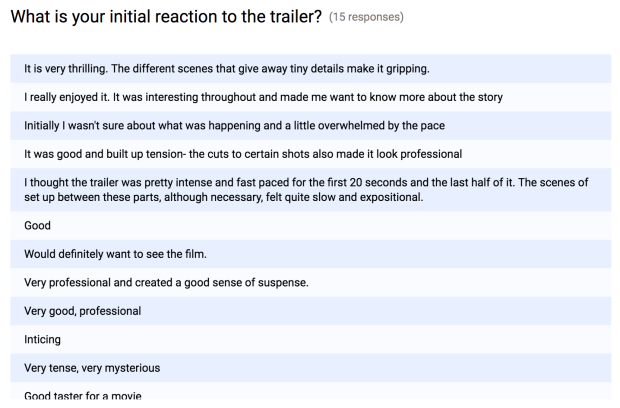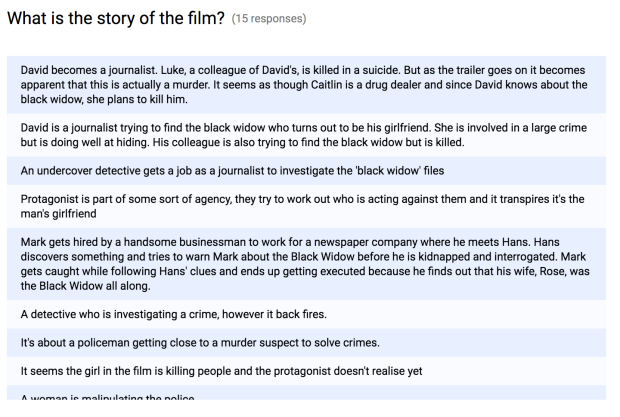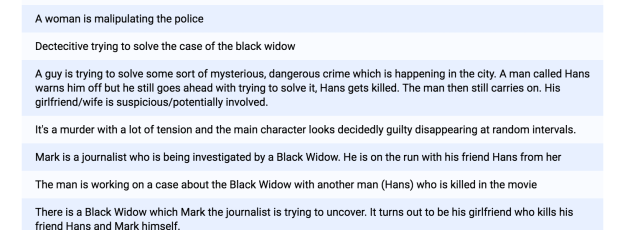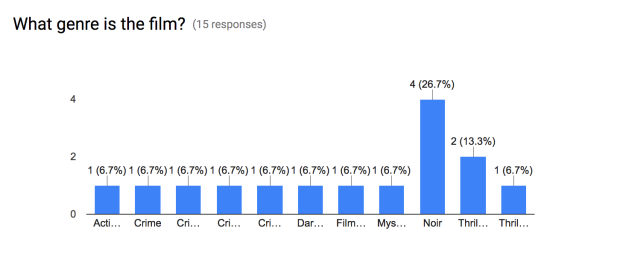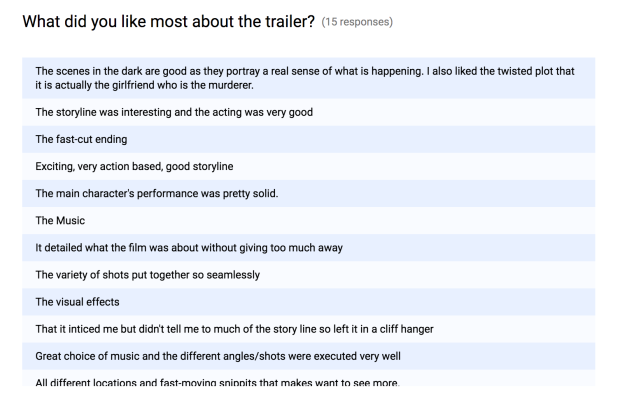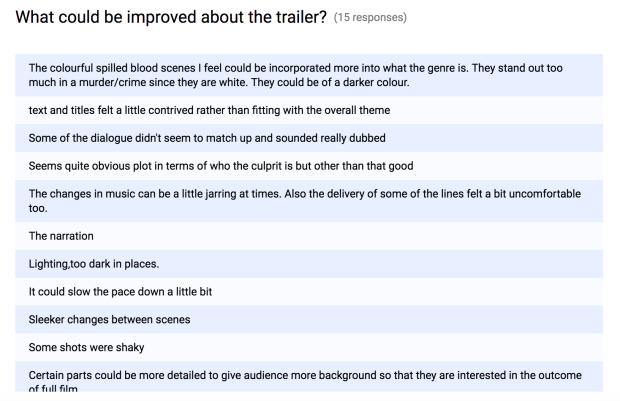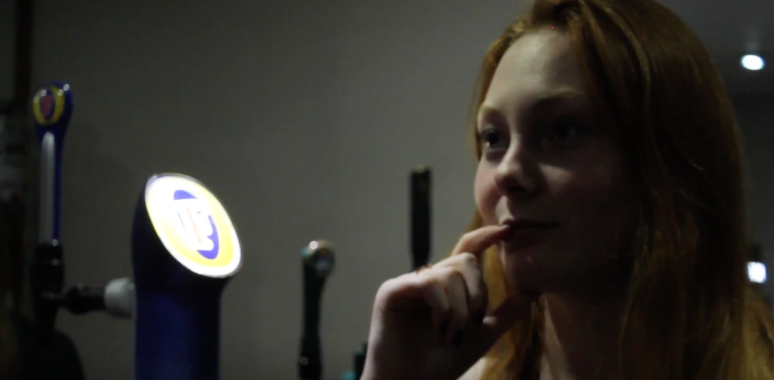What have you learned from your audience feedback?
Whilst producing our trailer, we also made a SurveyMonkey with some closed quantitative questions for audience members to answer. We asked 20 people at random, some of whom are in our target audience whereas others were not. Therefore, it is important to note that these people will have a limited understanding of the genre of noir (which is a more niche genre) and their understanding may be slightly less developed than my own. Here is what we found.
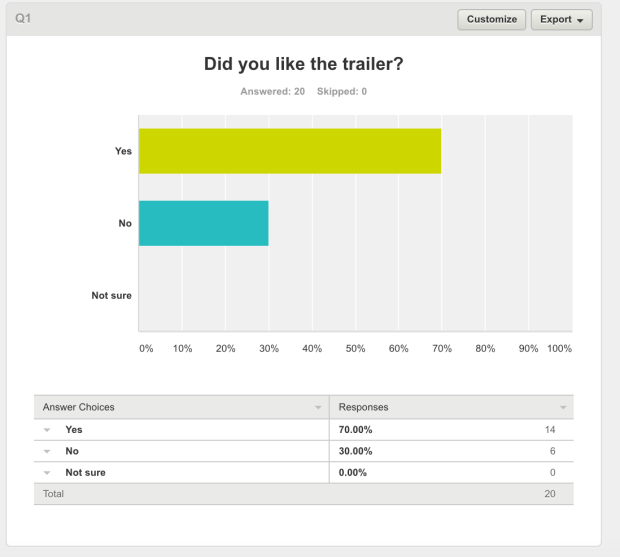
Firstly, 70% of our respondents reported that they liked our trailer. This is always a good thing as the purpose of any trailer to advertise a film to an audience. Whilst six people did answer that they did not enjoy the trailer, further questions will perhaps demonstrate as to why they felt like that, but it was always very unlikely for it to please everyone.

Again, an overwhelming majority of people reported that they understood our trailer. However, there is a danger here that they may have understood their own negotiated reading of the text, but this may not reflect the plot which we have created ourselves. However, if this conforms to the same results that we will attempt to uncover in our qualitative results then this will not matter so much.
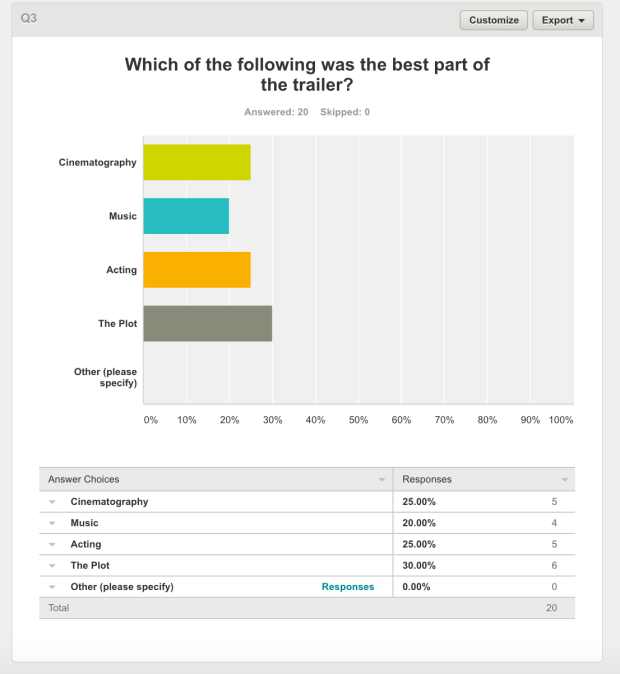
It is clear that our trailer has numerous different selling points to the audience. There was an almost even split amongst people as to what their favourite part of the trailer was. However, the plot came out just on top which is arguably the most important part of any film/trailer, as it could look appealing but if the story is not engaging, then no one will go and see it!
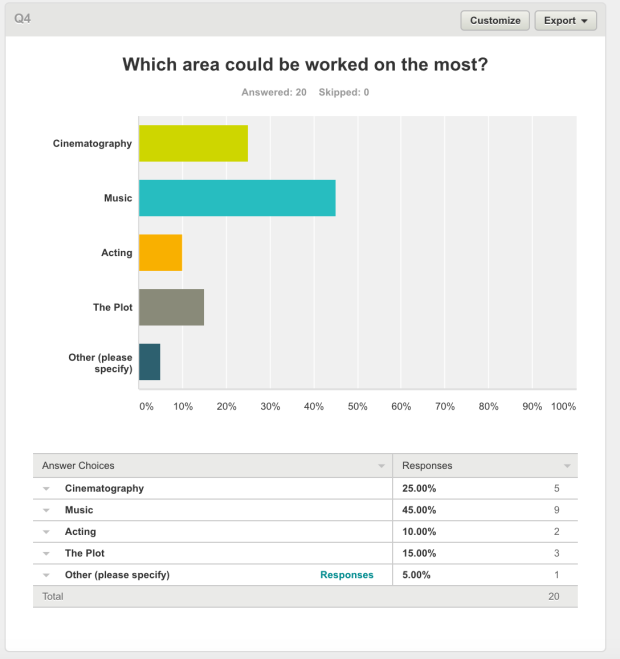
There was more consensus when it came to what people believed we should work on. Here it was stated that the cinematography and music were the main key things to improve. In our qualitative feedback, we will be able to discern exact reasons as to how these could be improved.

We also asked some sub-questions to gain an insight into the mindset of our audience. When asked what their favourite genre of film was, 35% answered comedy, with noir only receiving two votes. However, it is important to consider that noir is in itself a niche genre meaning that our film is targeted at this small 10%. If we can maintain a consistent understanding of the noir repertoire of elements along with some sub-elements of comedy and action films, then we can appeal to the widest audience.
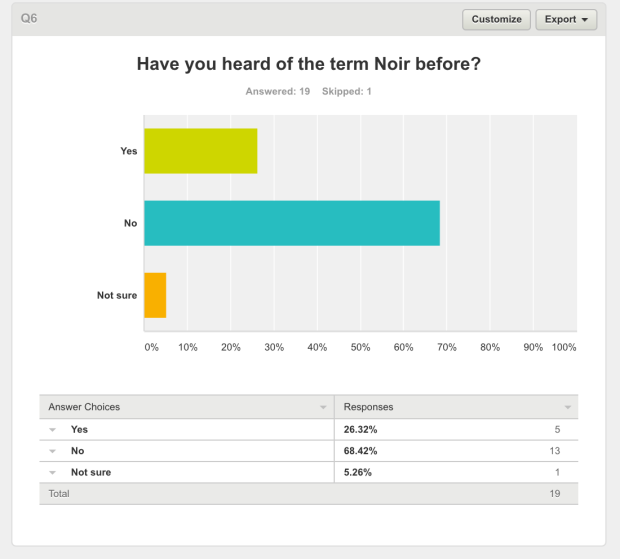
The response to the previous question is largely backed up by our following question with 68% of people never having heard of noir before. This is likely due to its obscure nature as a genre, although audience members may have seen a noir film before but just not have realised it.
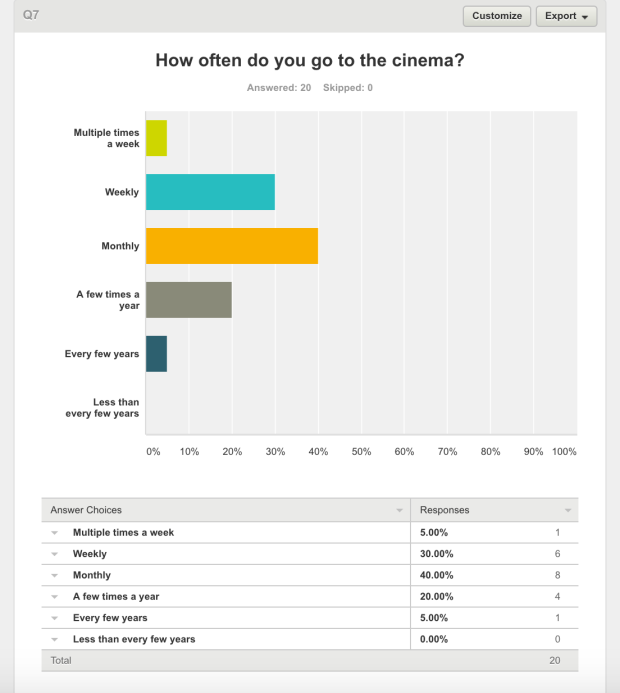
We were also able to determine that many of our audience will go to the cinema either once a week or once a month (on the whole), this therefore would mean that our film would have a good chance of succeeding at the box office if it were to go on a mainstream release.
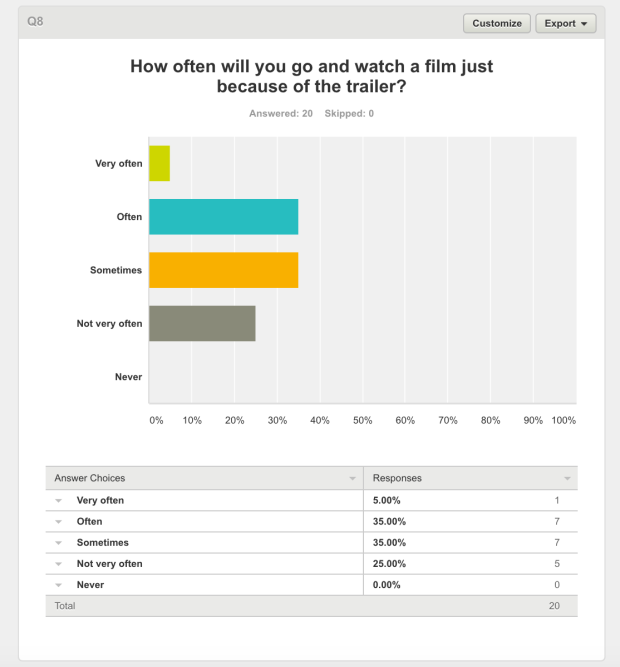
We were also able to discern that a significant number of the public will go and see a film based on its trailer. Therefore, this means that our film is likely to succeed if we can produce the trailer to a high enough quality.
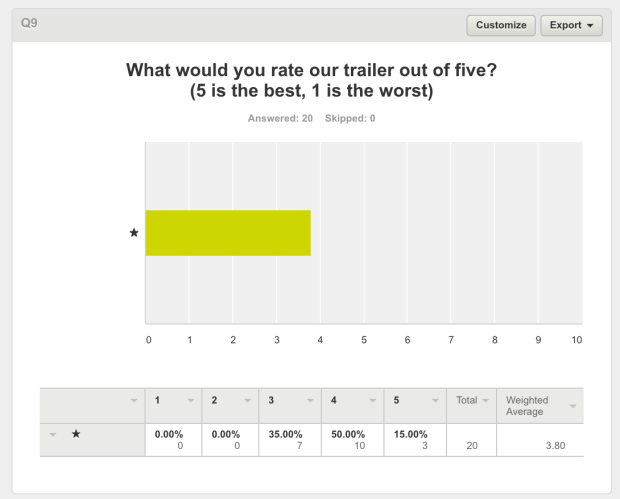
We then asked for people to rate the trailer out of five. We received an average 3.8 rating, which is probably a number that could be improved further. Thankfully, no one thought our trailer was worse than 3* and some did give it 5* showing a range of mostly positive opinions.
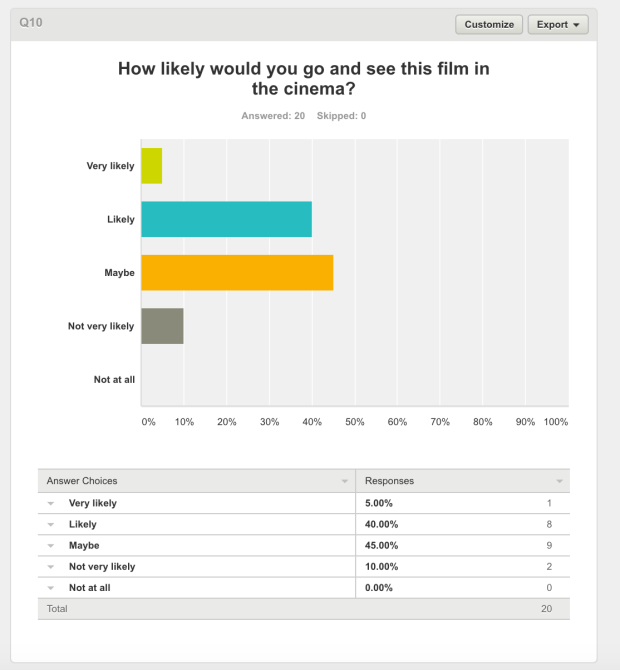
We then looked to see how much appetite was generated by this trailer to see the full film, i.e if it did its job correctly. A considerable number of audience members chose to be rather tentative at this stage. This could be due to the fact that we didn’t directly target our primary audience of 25+. If we were to do this again, hopefully, the results would be more weighted towards ‘very likely’.
Therefore, from this exercise, we have obtained feedback on what areas need to be improved for our trailer and how it would be received on a mainstream release. We will now go about conducting some qualitative feedback to link back to these original findings.









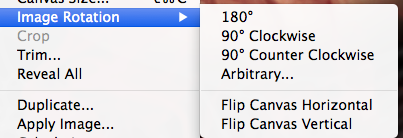


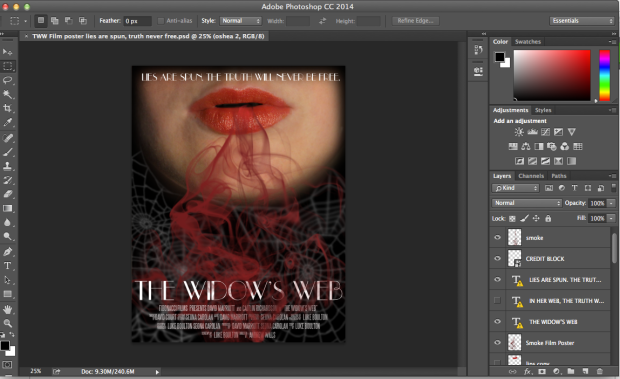
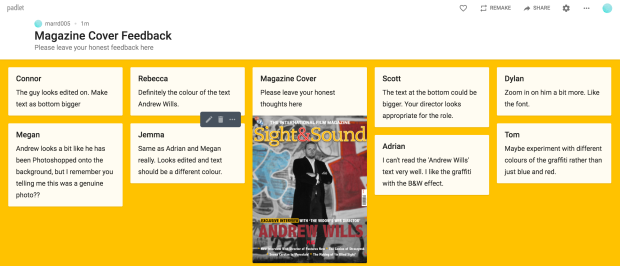

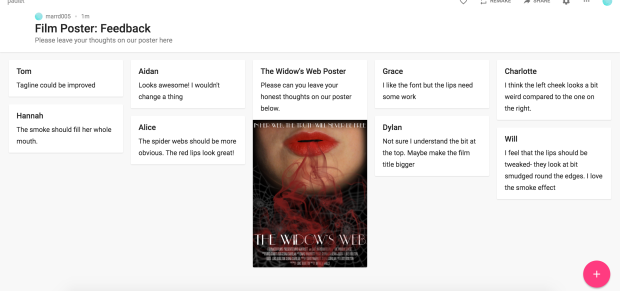 We then proceeded to use the same method of feedback for our poster. This indicated to us that we should improve the tagline, make some adjustments to the lips/mouth of Rosette to make it appear more streamlined and improve the spider webs around the smoke.
We then proceeded to use the same method of feedback for our poster. This indicated to us that we should improve the tagline, make some adjustments to the lips/mouth of Rosette to make it appear more streamlined and improve the spider webs around the smoke.

